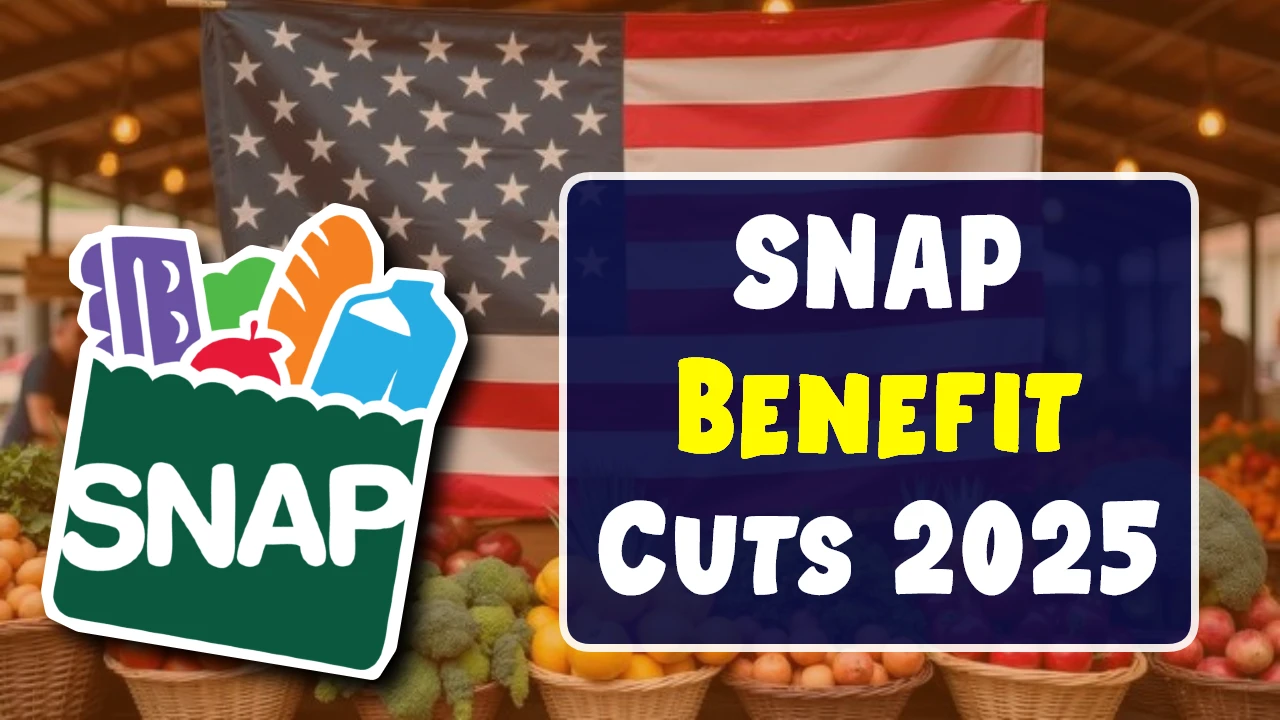Significant benefit cuts will impact many participants in the SNAP in 2025. For millions of low-income households, these benefits provide a monthly budget for groceries. Even as the cost of food and essentials goes up, people are relying on SNAP more than ever.
In the new year, Congress and the U.S. Department of Agriculture (USDA) opted to lower the amount of the monthly payments for eligible households. The change results from adjustments made at the federal level of funding and revised cost-of-living figures. These changes aim to take SNAP funding from emergency pandemic funding to something closer to what a normal budget allocation would be.
SNAP Benefit Cuts 2025
The steep though not systematic reduction in SNAP payments is a policy decision. The COVID-19 pandemic led Congress to raise SNAP benefits under emergency programs to assist low-income families dealing with hardship. These emergency benefits expire in 2023, and by 2025 the USDA is ending the use of excess funds and temporary cost-of-living beefing up.
Instead, SNAP is reverting to a regular formula ted to historical food prices before the pandemic. Another factor is decisions on the federal budget. With public spending under more pressure, legislators found funds for several programs to cut. SNAP was exempted, and the cutbacks will be just as severe in almost all of the states.
SNAP Benefit Cuts 2025 Overview
| Article On | SNAP Benefit Cuts 2025 |
| Country | USA |
| Department | U.S. Department of Agriculture (USDA) |
| Eligibility | Must meet the basic income guidelines of the state. |
| Amount | As per eligibility |
| Payment Mode | Electronic Benefit Transfer (EBT) card |
| Payment Schedule | Monthly Benefits |
| Category | Latest News |
| Official website | https://usda.gov/ |
Eligibility for SNAP Benefits
- You need to meet basic income guidelines that are determined by your household size and your state’s policies.
- The value of your assets, such as savings and vehicles, must fall under the program.
- You need to be a U.S. citizen or qualify as a lawful immigrant with legal status.
- You are required to report changes such as income, address, or employment to your state SNAP office.
- Beneficiaries age 65 and older, as well as those with disabilities, may be subject to separate rules that apply in the calculation of benefit amounts.
Effect of the Cut on the Residents
That amount would depend on how many people are in a household and how much their income is and would be less in high-cost areas. For instance, a family of four who was getting $1,200 a month might now get closer to $1,000. Single-person households will be eviscerated, too, though the actual dollar change will be less. Cuts across the board are estimated by the USDA to be 15 to 20 percent every month. Higher-cost areas could experience less of a percentage reduction but will still experience a visible decrease.
How can Families Adapt to Reduced Benefits
With the cuts to SNAP starting to take effect, families are going to have to find new ways to stretch their benefits. Many experts recommend planning out meals, buying less expensive store brands, and shopping around for grocery store deals. Community support can also lend a hand; food banks, pantries, and local meal programs can fill in the gaps.
Some farmer’s markets in some parts of the country will have produce-matching programs for SNAP users, which can help families get a little more fresh fruits and vegetables for less money. Budgeting becomes all the more important when money gets tight. Families may find themselves having to do price comparison shopping across stores, or to shop using coupons and discount apps.
Families should tap into all available resources, from online saving tips, and apps to local support groups. Contacting health clinics, churches, or community centers can lead to secret support resources. These programs in local communities often don’t exclude and are often open to anyone struggling, regardless of SNAP status.
The Long Run Effect of Reduced SNAP Assistance
Cuts to SNAP will have cascading effects that stretch beyond the dinner table. Less food assistance might mean more stress for some families, worse health outcomes, and larger amounts of debt. Increased food insecurity is associated with poorer school performance in children and poorer physical health among adults.
However, policymakers hope that lower spending will give the federal budget a boost in the near term. But studies have found that cutting food assistance can cost society more in the long run, since underfed children and adults can go on to develop chronic health conditions that must then be treated.
Going forward, communities may put more effort into filling some of the gaps created by a decline in SNAP funding. Coaching and coordination of food and health programs will also be required among local nonprofit groups, state agencies, and concerned citizens. Tracking the results will also be important if the cuts to SNAP lead to worse health or more poverty, advocates could push to restore them. Whether those cuts will remain in place after 2025 or will change later remains to be seen.
FAQs
How much will my SNAP benefits be reduced in 2025?
Your monthly benefits will drop by roughly 15 or 20 percent, depending on the size of your family and where you live.
If I lose some of my part-time work because of the cuts, can I still qualify for SNAP?
You could as long as your income and assets comply with the program rules you may need to report changes.
What other food programs can help me if SNAP is cut?
Yes, there are food banks, pantries, and community meal programs in many places. Some farmer’s markets also provide bonus dollars to people using SNAP.



